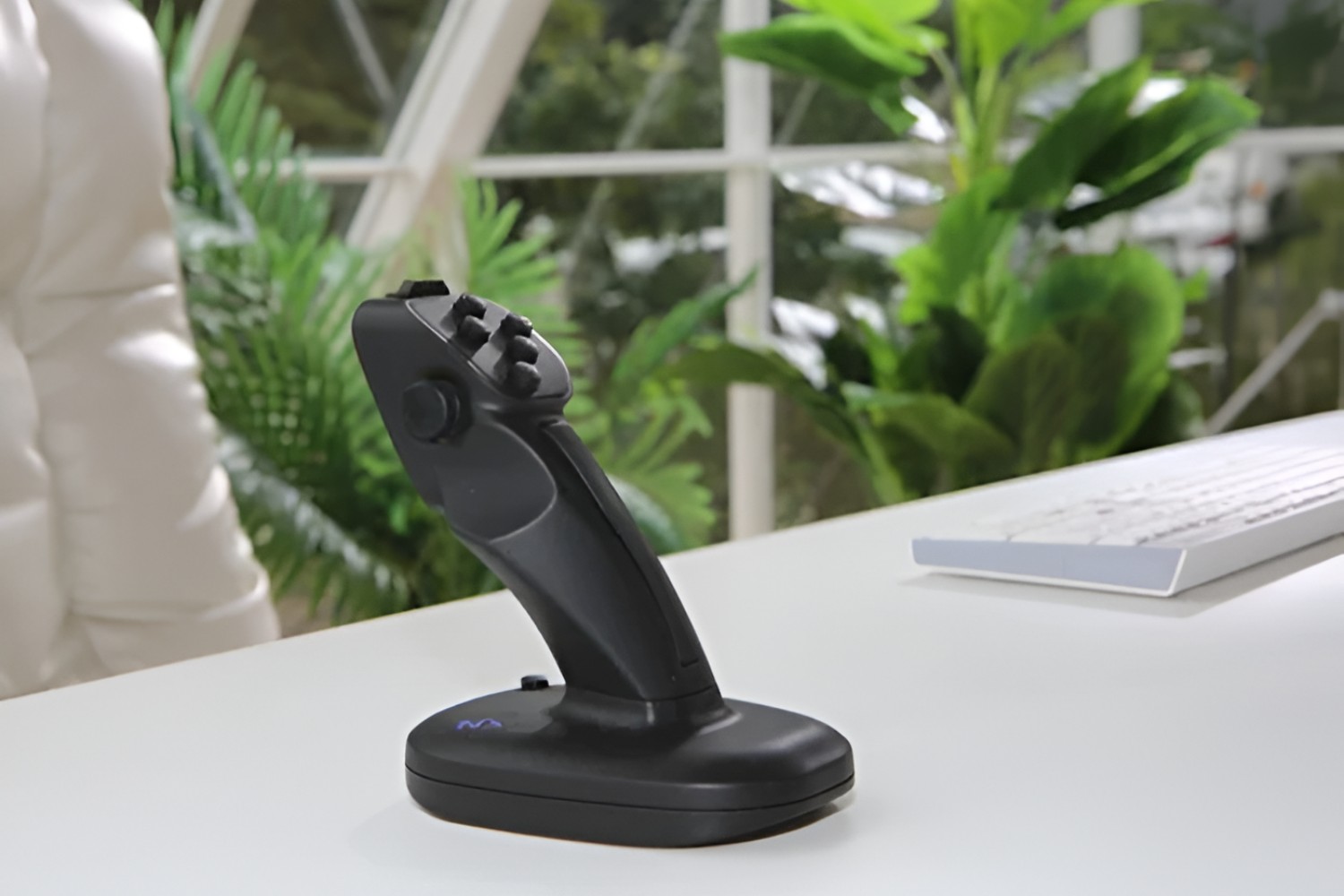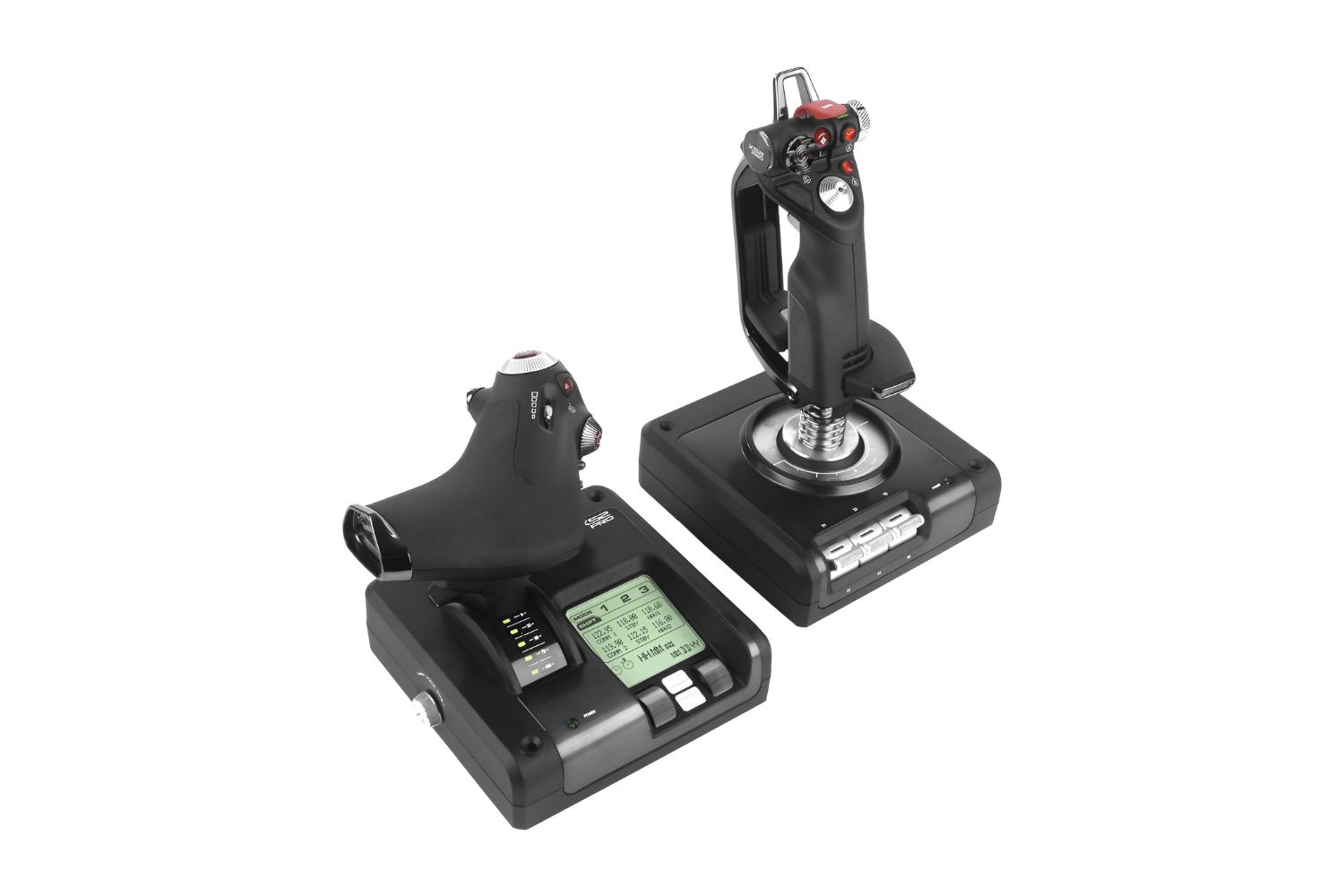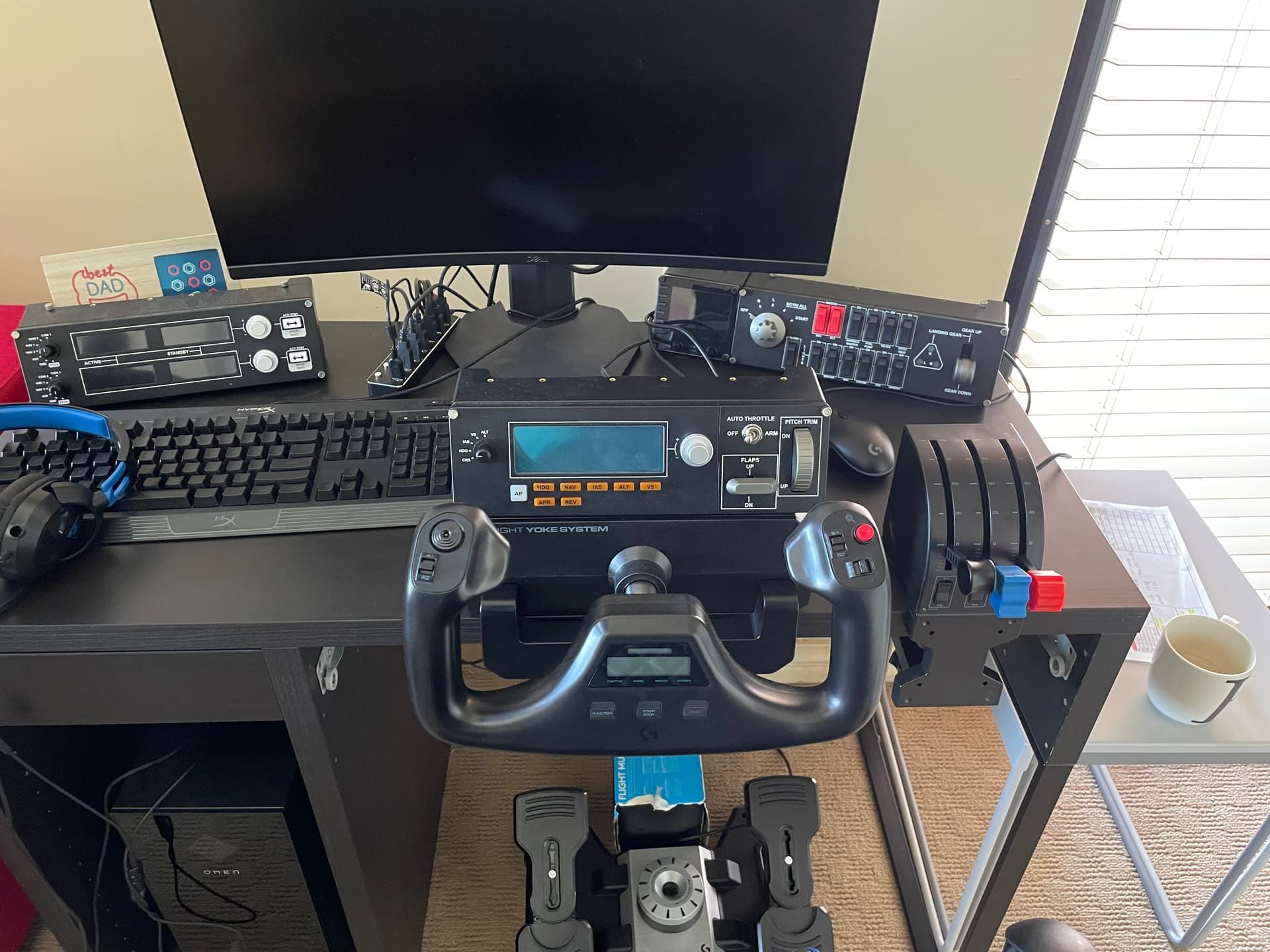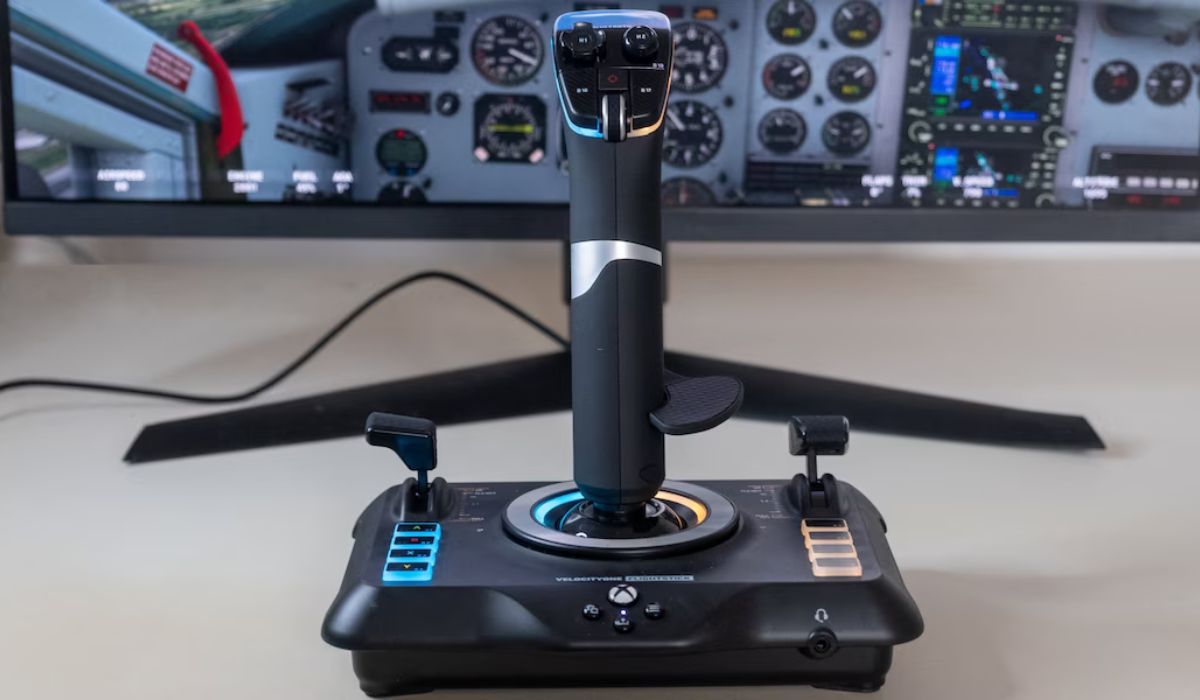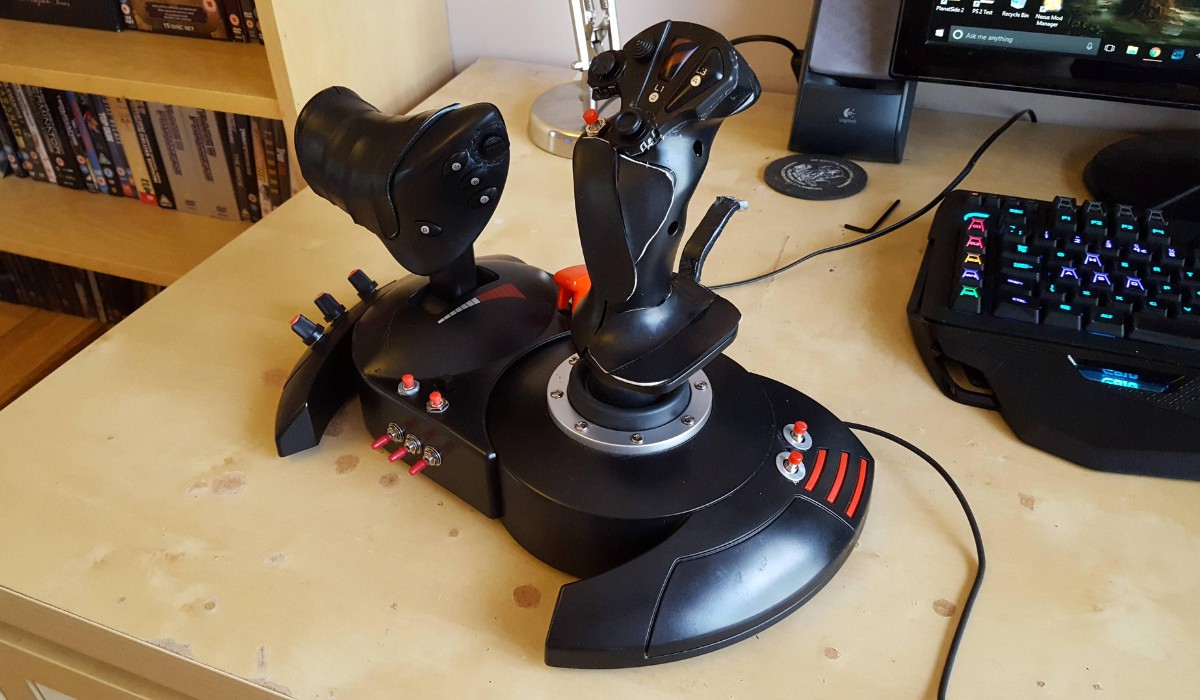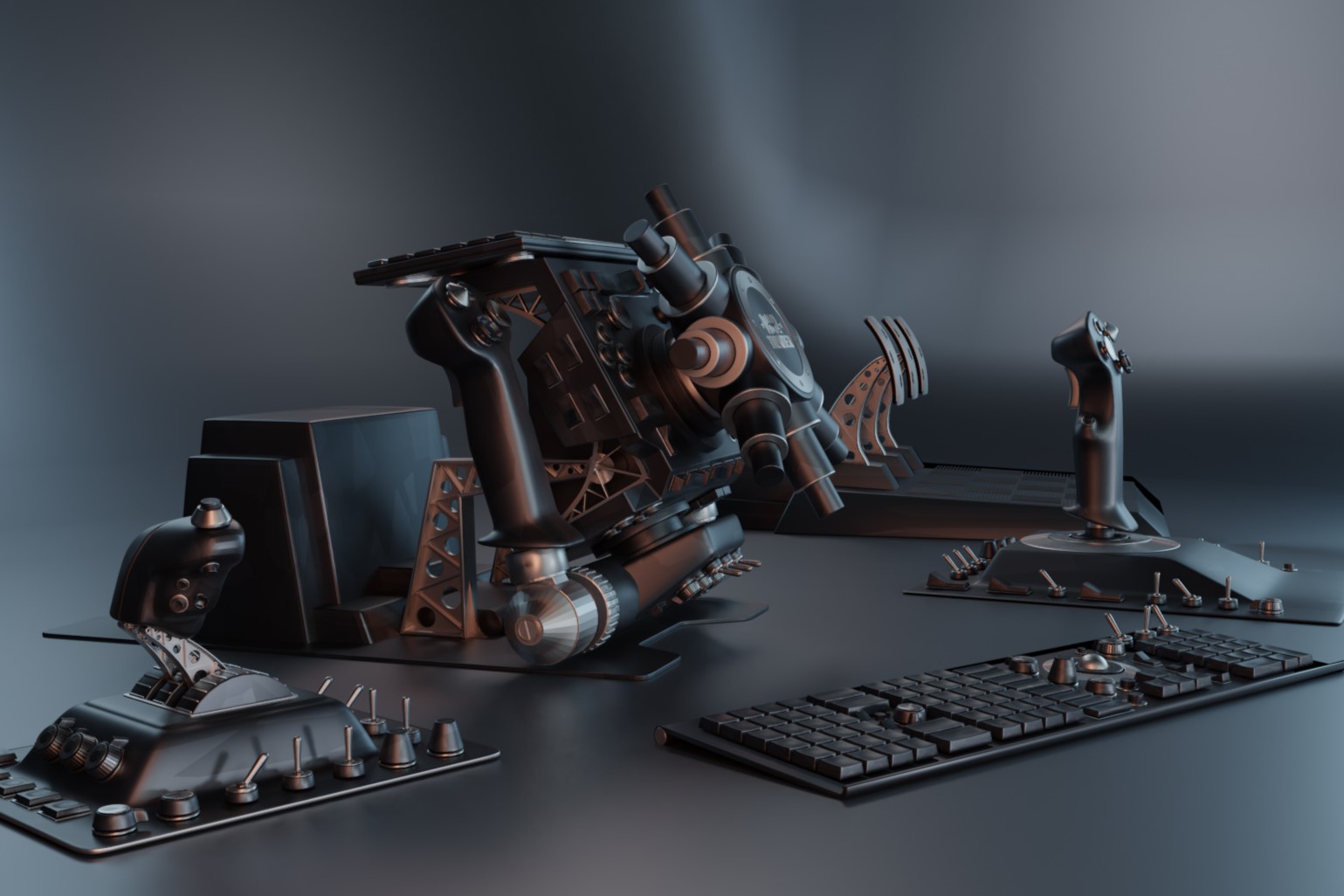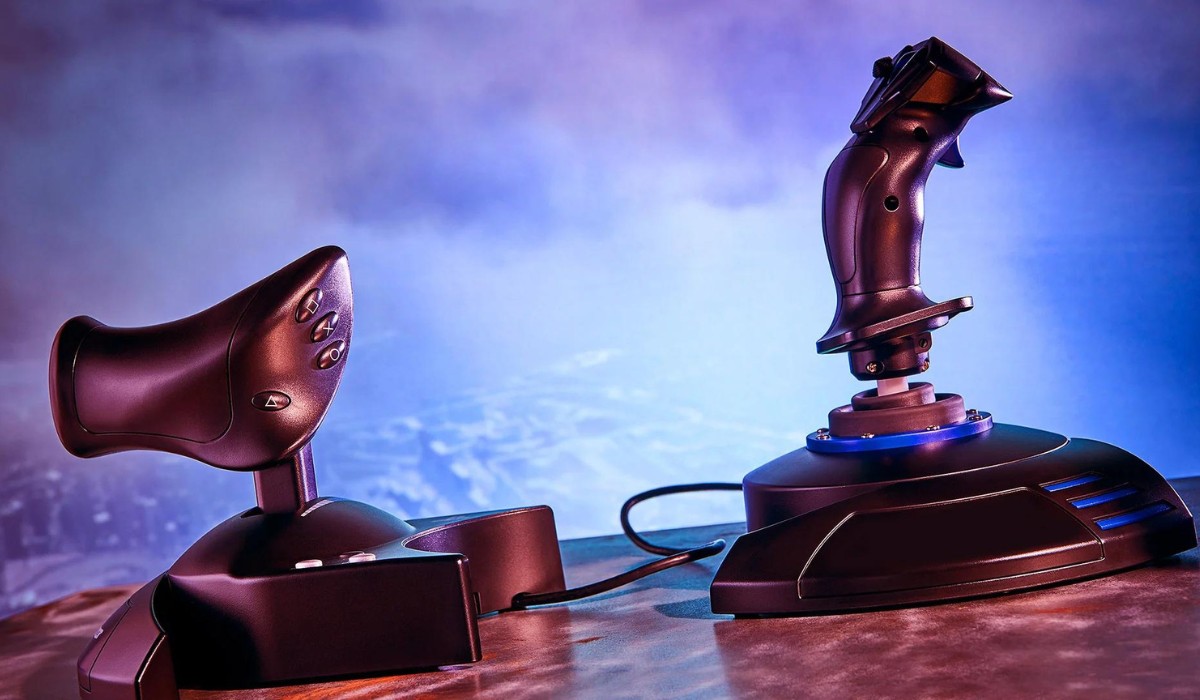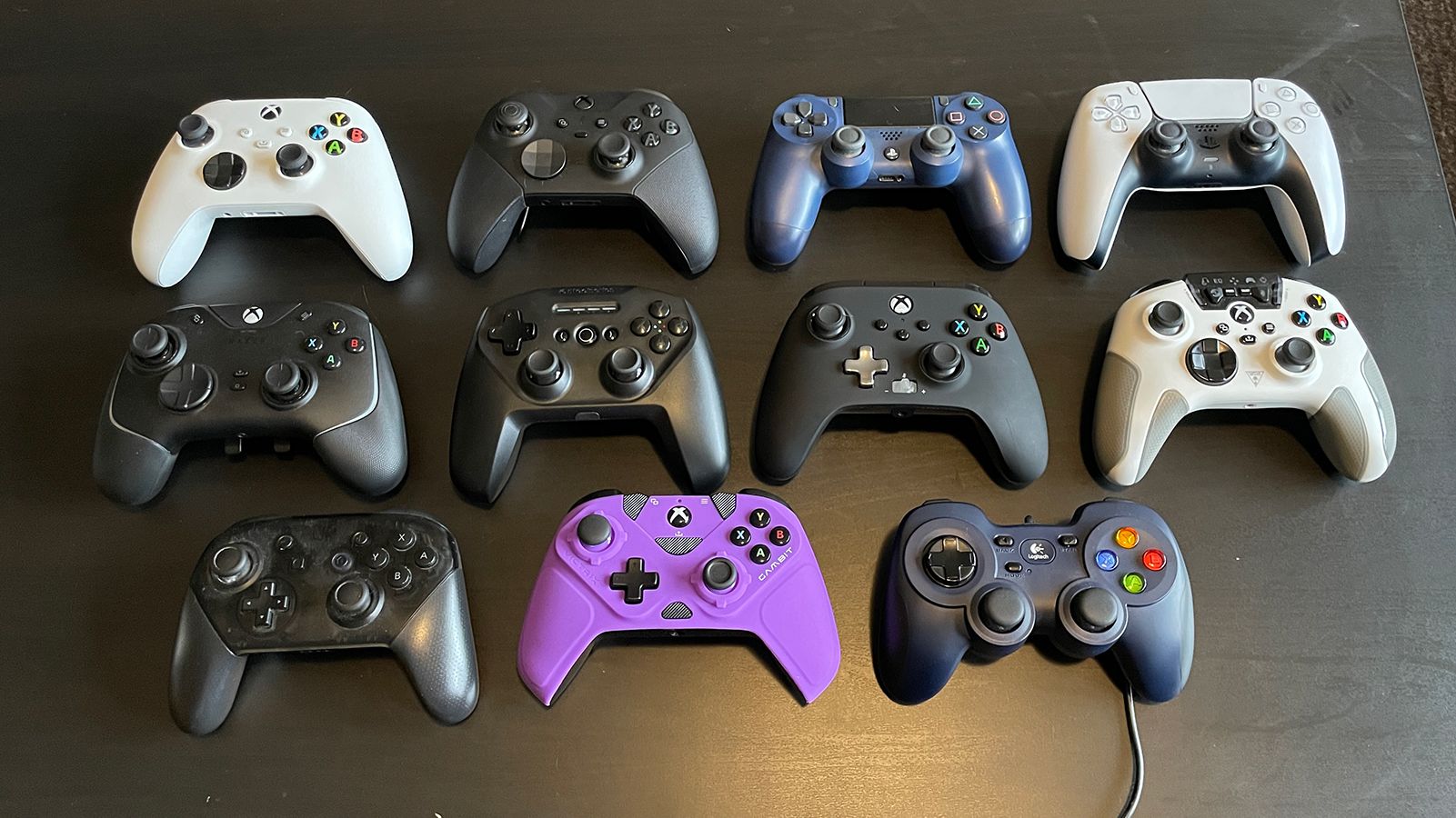Introduction
Are you tired of using a traditional mouse for your computer tasks and looking for a more immersive and engaging way to navigate your screen? Look no further than a flight stick! While flight sticks are commonly associated with aviation and gaming, they can also serve as an unconventional yet effective mouse replacement for everyday computing tasks. In this guide, we will explore how to use a flight stick as a mouse, from selecting the right flight stick to configuring and utilizing it seamlessly.
Whether you're a gaming enthusiast, a digital artist, or simply someone seeking a novel approach to computer navigation, integrating a flight stick into your setup can bring a new level of precision and excitement to your computing experience. By leveraging the intuitive controls and ergonomic design of a flight stick, you can elevate your productivity and enjoyment while interacting with your computer system.
In the following sections, we will delve into the essential steps for utilizing a flight stick as a mouse, including selecting the appropriate flight stick model, setting it up for optimal performance, and configuring it to function seamlessly as a mouse replacement. Additionally, we will provide practical tips and tricks to maximize the functionality and comfort of using a flight stick in place of a traditional mouse. Whether you're a seasoned flight simulator enthusiast or a curious individual eager to explore alternative input methods, this guide will equip you with the knowledge and skills to harness the full potential of a flight stick in your computing endeavors. Let's embark on this unconventional yet rewarding journey of integrating a flight stick as a versatile and engaging tool for computer navigation.
Choosing the Right Flight Stick
When venturing into the realm of using a flight stick as a mouse, selecting the right flight stick is paramount to ensure a seamless and enjoyable experience. With a myriad of options available in the market, it’s essential to consider several factors before making your choice.
Compatibility: Before making a purchase, verify the compatibility of the flight stick with your operating system. Whether you’re using Windows, macOS, or Linux, ensuring that the flight stick is compatible with your system is crucial for hassle-free integration and functionality.
Ergonomics: Consider the ergonomics of the flight stick, as you’ll be using it for extended periods. Look for a model that offers a comfortable grip and intuitive button placement, reducing fatigue and enhancing precision during use. Additionally, adjustable features such as palm rests and customizable button configurations can contribute to a personalized and ergonomic experience.
Input Precision and Customization: Evaluate the precision and customization options offered by the flight stick. Look for features such as adjustable sensitivity, customizable button mapping, and responsive axis controls, which are essential for fine-tuning the flight stick to suit your specific usage preferences, whether it’s for navigating intricate design software or engaging in fast-paced gaming.
Additional Features: Some flight sticks come with additional features such as programmable buttons, integrated throttle controls, and built-in rudder pedals. Assess these supplementary features based on your intended use, as they can further enhance the versatility and functionality of the flight stick beyond standard mouse emulation.
Reviews and Recommendations: Prior to making a purchase, explore user reviews and seek recommendations from experienced users or communities dedicated to flight simulation and gaming. Real-world experiences and insights can offer valuable guidance in selecting a flight stick that aligns with your expectations and requirements.
By carefully considering compatibility, ergonomics, input precision, customization options, additional features, and user feedback, you can make an informed decision when choosing the right flight stick for your intended use as a mouse replacement. The selected flight stick will serve as the foundation for a seamless and enjoyable transition to using this unconventional yet versatile input device.
Setting Up the Flight Stick
Once you have chosen the ideal flight stick for your needs, the next crucial step is setting it up for optimal performance and functionality as a mouse replacement. Proper setup ensures that the flight stick seamlessly integrates into your computing environment, providing a smooth and intuitive navigation experience.
Driver Installation: Begin by installing the necessary drivers for the flight stick on your computer. Most modern flight sticks come with plug-and-play functionality, allowing for automatic driver installation upon connection to your system. However, for advanced customization and fine-tuning, it’s advisable to download and install the latest drivers and software provided by the manufacturer.
Calibration and Sensitivity Adjustment: After installing the drivers, calibrate the flight stick to ensure accurate and responsive input. Access the calibration settings through the provided software or the operating system’s control panel. Adjust the sensitivity and dead zones according to your preference, taking into account the specific tasks for which you’ll be using the flight stick as a mouse.
Physical Placement and Stability: Position the flight stick on your workstation in a manner that allows for comfortable and stable usage. Consider using a dedicated mounting solution or a non-slip pad to prevent the flight stick from moving during use. Ensuring that the flight stick is securely positioned contributes to a consistent and reliable navigation experience.
Button Mapping and Customization: Explore the customization options for button mapping and programmable controls offered by the flight stick’s software. Tailoring the button layout to mimic mouse functions, such as left-click, right-click, and scrolling, enhances the intuitiveness of using the flight stick for everyday computing tasks.
Integration with Operating System Features: Familiarize yourself with the accessibility features and mouse emulation settings within your operating system. Adjust cursor speed, acceleration, and additional mouse settings to complement the functionality of the flight stick, ensuring a cohesive and seamless transition from a traditional mouse to the flight stick.
By meticulously setting up the flight stick, including driver installation, calibration, physical placement, button mapping, and integration with operating system features, you can establish an environment where the flight stick operates as a proficient and ergonomic mouse replacement. This thoughtful setup paves the way for a rewarding and efficient navigation experience, unlocking the full potential of the flight stick in your daily computing endeavors.
Configuring the Flight Stick as a Mouse
With the flight stick set up and ready for use, the next step is to configure it to function seamlessly as a mouse, replicating the essential navigation and interaction capabilities of a traditional pointing device. This configuration process involves mapping the flight stick’s controls to emulate the functions of a mouse, ensuring a natural and intuitive transition for various computing tasks.
Button Mapping for Cursor Control: Utilize the flight stick’s software or the operating system’s accessibility settings to map the flight stick’s buttons and axes to cursor movement. Assign the joystick’s movement to control the cursor’s position on the screen, providing a fluid and responsive means of navigating interfaces, applications, and web content.
Emulating Mouse Clicks: Configure the flight stick’s buttons to replicate the primary and secondary mouse clicks. Assign specific buttons to serve as the left-click and right-click functions, enabling seamless interaction with on-screen elements, including selecting, dragging, and interacting with user interface components.
Scrolling and Additional Functions: Explore the customization options to assign scrolling functionality to the flight stick, allowing for effortless vertical and horizontal scrolling within documents, web pages, and other scrollable interfaces. Additionally, consider mapping other mouse-related functions, such as double-clicking and gesture-based commands, to further enhance the flight stick’s versatility as a mouse replacement.
Adjusting Sensitivity and Precision: Fine-tune the sensitivity and precision of the flight stick’s controls to align with your desired cursor movement speed and accuracy. Balancing the sensitivity settings ensures that the flight stick provides a responsive and nuanced navigation experience, catering to tasks that demand both fine-grained control and swift cursor movement.
Testing and Refinement: After configuring the flight stick as a mouse, engage in real-world usage scenarios to test the effectiveness of the setup. Refine the button mappings and sensitivity settings based on your comfort and usability, iterating on the configuration to achieve an intuitive and seamless transition from a traditional mouse to the flight stick.
By meticulously configuring the flight stick to emulate the essential functions of a mouse, including cursor control, mouse clicks, scrolling, and precision adjustments, you can transform it into a versatile and capable input device for a wide range of computing tasks. This tailored configuration empowers you to navigate your digital environment with precision and fluidity, harnessing the unique capabilities of the flight stick as a compelling alternative to conventional mouse input.
Using the Flight Stick as a Mouse
Now that the flight stick has been configured to function as a mouse, it’s time to explore the practical applications and benefits of using this unconventional input device in everyday computing tasks. Embracing the flight stick as a mouse replacement opens up a world of possibilities, offering enhanced precision, immersive control, and a unique user experience.
Seamless Navigation: Navigate your operating system, applications, and web browsers with fluidity and precision using the flight stick. The intuitive joystick controls and button mappings provide a seamless transition from traditional mouse input, allowing for effortless cursor movement and interaction with on-screen elements.
Precision in Design and Creativity: For digital artists, graphic designers, and content creators, the flight stick offers a new dimension of precision and control. Utilize the flight stick’s nuanced input to manipulate design elements, navigate intricate interfaces, and engage in creative workflows with enhanced dexterity and accuracy.
Immersive Gaming Experience: Beyond traditional computing tasks, the flight stick’s mouse emulation capabilities bring a heightened level of immersion to gaming experiences. Whether engaging in flight simulation, first-person shooters, or strategy games, the flight stick enables intuitive and immersive control, adding a new layer of engagement to gaming sessions.
Ergonomic Comfort and Customization: Embracing the flight stick as a mouse replacement introduces ergonomic benefits, reducing strain and fatigue associated with prolonged mouse usage. Additionally, the customizable button mappings and sensitivity adjustments cater to individual preferences, allowing for a personalized and comfortable navigation experience.
Efficiency and Novelty: Embracing the unconventional nature of using a flight stick as a mouse infuses a sense of novelty and innovation into your computing routine. The efficiency and precision offered by the flight stick contribute to a productive and engaging workflow, while simultaneously introducing a unique and enjoyable approach to interacting with your digital environment.
By leveraging the flight stick as a mouse replacement, you can elevate your computing experience, whether it’s for productivity, creativity, gaming, or simply embracing a new and unconventional input method. The seamless integration of the flight stick into your daily computing endeavors unlocks a realm of precision, control, and enjoyment, enriching your interaction with digital interfaces and content.
Tips and Tricks for Using a Flight Stick as a Mouse
As you embark on the journey of integrating a flight stick as a mouse replacement, consider the following tips and tricks to enhance your experience and maximize the potential of this unconventional input method:
- Customize Button Mapping: Tailor the button mappings to align with your preferred computing tasks, assigning specific functions such as copy, paste, and application switching to the flight stick’s buttons for streamlined navigation and productivity.
- Explore Advanced Software Settings: Delve into the advanced settings provided by the flight stick’s software to fine-tune axis sensitivity, dead zones, and additional customization options, allowing for a more nuanced and personalized navigation experience.
- Utilize Profiles for Different Tasks: Take advantage of profile settings within the flight stick’s software to create custom configurations tailored to specific activities, such as gaming, design work, and general productivity, optimizing the flight stick for diverse usage scenarios.
- Experiment with Sensitivity and Dead Zones: Adjust the sensitivity and dead zones of the flight stick to achieve a balance between precise cursor control and swift navigation, catering to the specific demands of different applications and tasks.
- Consider Ergonomic Accessories: Enhance the comfort and stability of using the flight stick by incorporating ergonomic accessories such as wrist rests, mounting solutions, and desk pads, promoting a comfortable and supportive environment for extended usage sessions.
- Engage in Community Discussions: Participate in online forums, communities, and social media groups dedicated to flight simulation, gaming, and alternative input methods to exchange insights, tips, and experiences with fellow enthusiasts using flight sticks as mice.
- Experiment with Game Compatibility: Explore the compatibility of the flight stick with various games and gaming genres, leveraging its mouse emulation capabilities to enhance control and immersion in gaming experiences beyond traditional controller or keyboard input.
- Regularly Update Drivers and Firmware: Stay informed about driver updates and firmware enhancements released by the flight stick’s manufacturer, ensuring that you benefit from the latest optimizations and features that contribute to an improved user experience.
By incorporating these tips and tricks into your utilization of the flight stick as a mouse, you can harness its full potential, optimize its functionality for diverse tasks, and immerse yourself in a rewarding and innovative approach to computer navigation and interaction.







